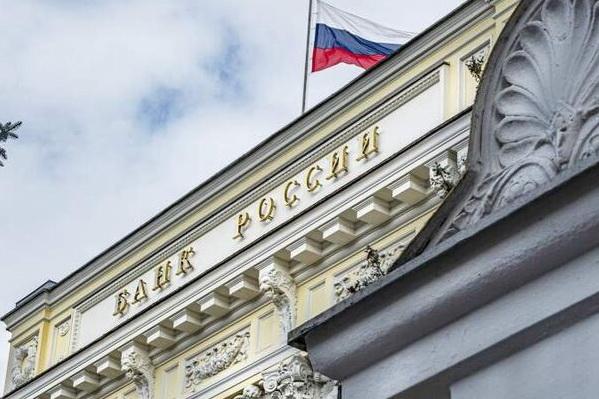According to 11 out of 15 financial experts and analysts interviewed byIzvestia, the Central Bank will start lowering the key interest rate by the end of the first half of 2025. Four other experts express more pessimistic expectations, suggesting that the lowering process will start only in the second half of the year. At the moment the key rate is 21%, it was last raised in October, and earlier it was 19%
At the end of October, analysts predicted a key rate cut in the first quarter of 2025. However, over the last week, the Central Bank sent a number of signals that changed the perception of the situation in the market.
Thus, on October 30, the Central Bank presented the document “The main directions of the unified state monetary policy for the next three years”, in which the base scenario assumes that the rate will remain at 17-20% next year. The earlier draft, published in August, contained more optimistic forecasts - from 14% to 16%.
At the State Duma meeting on October 31, Elvira Nabiullina expressed a clear position on interest rate cuts. She noted that a tight monetary policy (MP) is not a “whim” of the Bank of Russia, but a necessary response to the current economic conditions.
It is a dangerous illusion to believe that higher inflation can be reliably kept within a certain corridor. Therefore, we are not going to make any discounts here on achieving our target of 4%. In our view, this is the maximum of what can be considered price stability,” Nabiullina emphasized.
She also added that sustainable economic growth is impossible with high inflation.
The central bank has previously signaled its readiness to further tighten its monetary policy. At a press conference following the meeting of the Central Bank's Board of Directors in October, Elvira Nabiullina indicated that in December the rate may be raised to 23%. At the same time, she also noted that there is no growth limit for the key rate.
In what case will there be a decrease in the key rate of the Central Bank?
The main reason for the Central Bank to increase the key interest rate is to fight inflation. According to the regulator's data, in September its level amounted to 8.6% year-on-year, while the target was set at 4%.
Previous key rate hikes have already affected lending activity. As Elvira Nabiullina noted, in July and August there was a decrease in the volume of consumer loans. At the same time, corporate loans are showing growth, having increased by Br10.6 trillion in the first nine months of 2024.
High interest rates contribute to the economy's transition from the consumer to the savings cycle, which leads to a cooling of many processes. According to Maxim Kapustin, Head of Investment Advisory Department at Renaissance Bank, the population is now less involved in lending and shopping, focusing on savings in deposits and bonds. This helps stabilize demand and further reduce prices for goods and services.
Prices in Russia are rising not only because of active consumption, when people take out loans and actively make purchases, which allows sellers to raise prices. There are also other reasons - the growth of production costs and the increase in government spending, said Natalia Milchakova, a leading analyst at Freedom Finance Global. The regulator is not able to directly influence these factors.
In order for the Central Bank to change its monetary policy, not just the first signs of inflation reduction, but also a steady trend in this direction are needed, Milchakova added.
According to Marina Nikishova, chief economist at Zenit Bank, the maximum impact of changes in monetary policy is usually seen after two or three quarters. Since the cycle of interest rate increase by the Central Bank began in July, the first results may be noticed in spring. The expert also believes that consumer demand and lending volumes should slow down by summer.
Risks for the economy due to the high key rate.
Regulators consider it necessary to tighten monetary policy to neutralize pro-inflationary factors beyond their control, says Olga Belenkaya of Finam Financial Group. However, this may have negative consequences for industries that depend on market financing.
The risk is that the high level of the key rate together with an increase in the tax burden on business from 2025 may lead to a reduction in private investment and, possibly, to the closure of some businesses,” she explained.
The rate increase will have a negative impact on companies with a high level of debt burden, said Marina Nikishova from Zenit Bank. Limited access to credit for many organizations, especially small and medium-sized businesses, may reduce profitability and slow down investment and economic growth.
Nevertheless, as Elvira Nabiullina noted, the growth of lending to legal entities continues, as even with high interest rates, businesses still continue to borrow for investment.
In addition, the high level of the key rate limits consumer lending, which negatively affects the financial opportunities of the most vulnerable citizens, said Nikita Kapustin, head of the analytical department of LLC “BBR Broker”. As a result, some people may start turning to unprofessional lenders, which will create prerequisites for the development of the shadow economy and an increase in fraud.
Evgeny Koshelev, director of Rosbank's market research and strategy department, says that high interest rates are a way to balance savings and spending amid unstable inflation expectations. However, this will not solve deeper structural problems such as “distortions in the labor market” and increased government spending.

